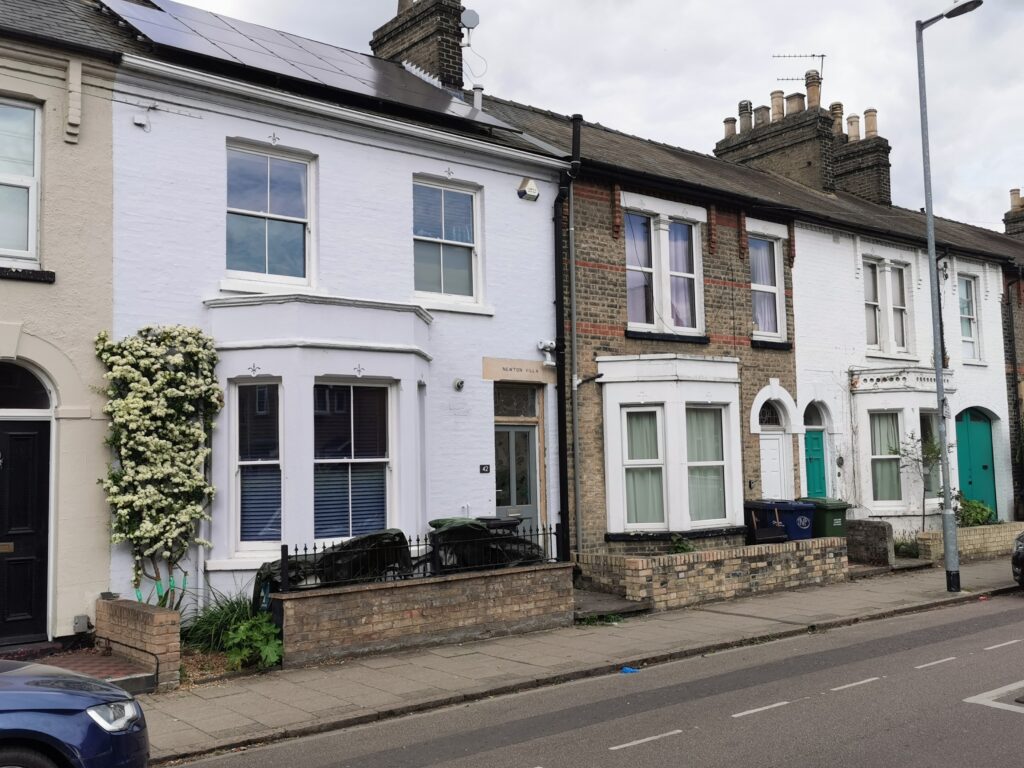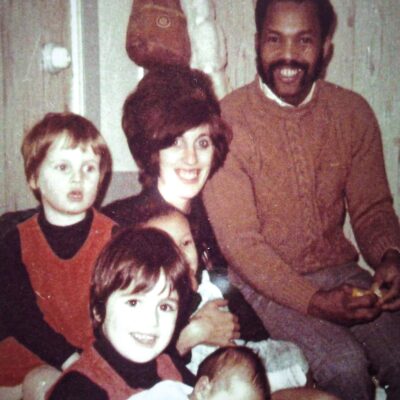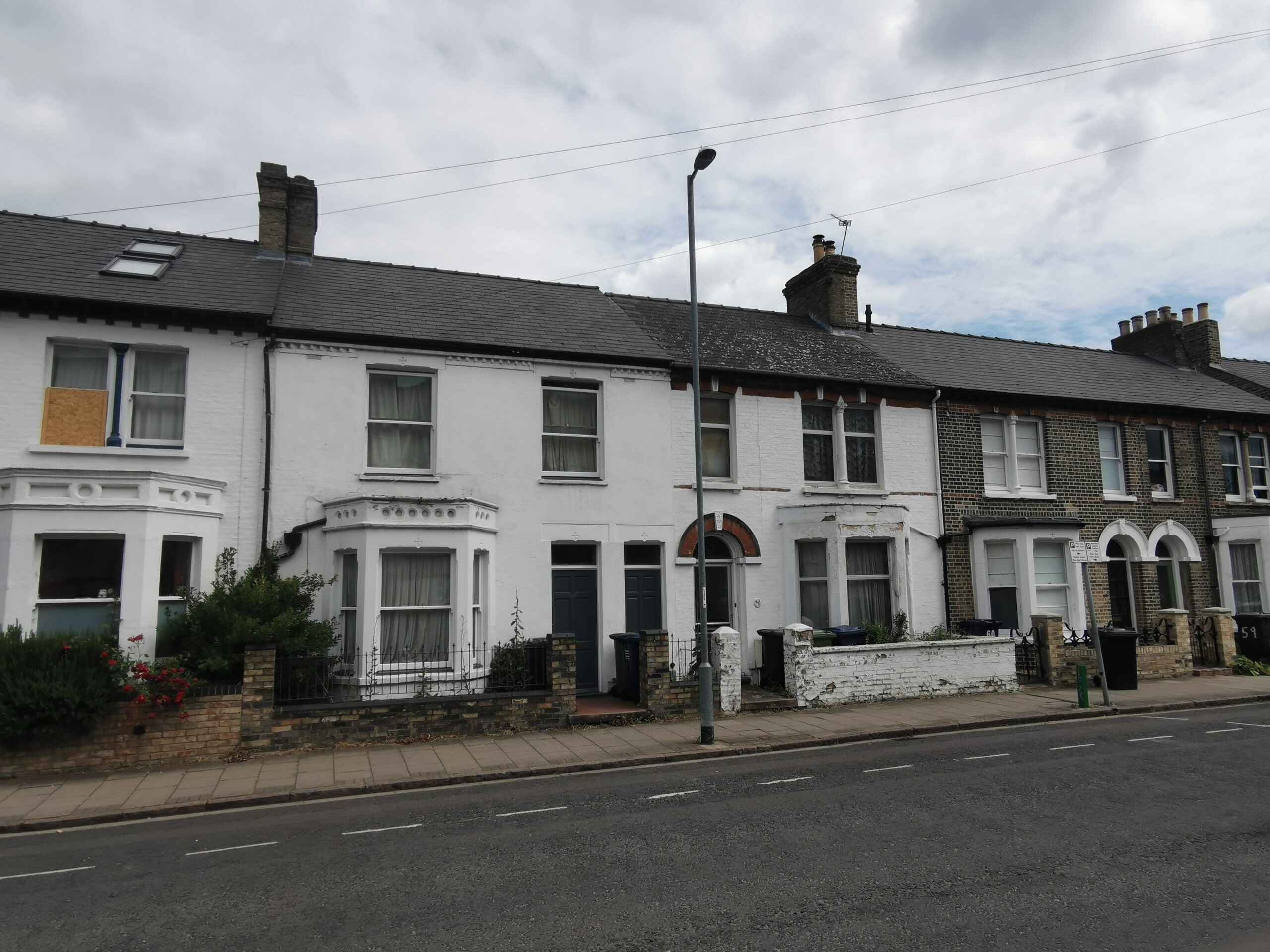Search by topic
- archaeology
- architecture
- bricklayer
- Building of Local Interest
- carpenter
- church
- crime
- dressmaker
- fire
- Great Eastern Railway
- listed building
- medieval
- oral history
- Public House
- Rattee & Kett
- Religious House
- Roman
- scholar
- school
- Then and Now
- tudor
- women
- work
- world war one
- world war two
Search by text
 40-42 Devonshire Rowd
40-42 Devonshire Rowd42 Devonshire Road, Newton Villa
History of 42 Devonshire Road
The occupant of this house reported in 2020 that she thought that Mr Parmenter had had the house built for him originally. She wrote that the house was a coal merchants for many years and used to have a side access path that ran through to the light engineering works behind in what is now St Barnabas Court (was Mantles). In the back garden there were lots of foundations of walls from what may well have been mini coal/storage sheds. There were lots of bits of coal embedded in the soil of the garden. There was an internal window between the front and middle rooms which looked like it could have been a cash/office hatch. There were still offices throughout the 1960s-90s. There was a dentist’s here at some stage. In the 1990s there were still various offices downstairs and a flat upstairs. At that stage the whole house was pretty much open plan and there were office strip lights everywhere so it could be assumed that the whole house had been offices for a number of years. It was converted into a single house after the current owner moved in in the 1990s. Knowing that Douglas Adams lived in the area they have often joked that the house name (Newton Villa) and number (42) provided him with 42 being the answer to everything!
1901
Edward Parmenter, railway engine driver
1911 –
1913
Edward Parmenter, engine driver
1962
B Stacey and Sons, coke and coal merchants
1970
Charringtons Vinter, coal and coke merchants
In 2024 Clifford Wright, b 1935, sent this to Capturing Cambridge:
This was my childhood home. My grandfather – Stanley Wright – gave it to his older son Leslie Wright and to his wife Gladys as a wedding present in 1935. I was born in September 1935. I do not know when my grandfather purchased the house.
It was previously owned by Stacey, the Coal Merchant, who received coal deliveries by rail in the sidings immediately opposite. His coal was delivered in sacks by horse and cart; the horse manure was quickly gathered by nearby householders as feed for their back-garden crops.
The Coal Merchant used no. 42 as his Coal Order Office. His customers entered the house through the front door, and into a passage. (We kept our three “bikes” in “the passage”). From “the passage”, there was an internal door with a letterbox where customers placed their orders.
My maternal grandfather worked for the “Gas Company”, and he equipped the newly-married’s home with gas heaters in what we called “the kitchen” with gas fires, and – such luxury – a gas-fired geyser in an upstairs bathroom. Like many houses of this time, no.42 had an outside lavatory. My father sealed its door. He knocked down an internal wall into “the scullery”, to create an indoor lavatory – again, such luxury. At the end of the back garden was a substantial brick-built garden shed and workshop We used it as a store for our coal. During the war-years, I could hear the voices of women working together in a building behind the end wall of our garden.
No.42 was a good place for my childhood. The “front room” was in daily use, in contrast to the usual use of the “front room” only for special occasions. It was my playroom – train set, piano, and window to the passing pedestrians and traffic. During my school years I came home everyday for my meal – not school dinners. The reason was that my mother, Gladys, was totally deaf – long before hearing-aids. I now understand that having me home for lunch gave her a task, and company in an otherwise lonely life in the dark rooms at the back of the house.
The war years were also exciting for me – because when the air-raid alert was sounded, my father would open wide the curtains of the darkened front bedroom, and we would sit watching for the barrage balloons, and search-lights. I now think that he was watching the railway which we overlooked, and would be ready to respond to a raid, or report on what he saw.
My Grandad Wright was the Station-Master – in those days, a significant role. His tasks involved welcoming the Royal Train, and over-seeing its departure for the Newmarket Races or a visit to Sandringham. We watched him at work when the Royal Family stopped at Cambridge before resuming their journey.
We moved from No. 42 to the home of my maternal grandparents, in Newnham, after they died. My parents sold No. 42.
…………….
Contribute
Do you have any information about the people or places in this article? If so, then please let us know using the Contact page or by emailing capturingcambridge@
License
This work is licensed under CC BY-NC-SA 4.0













